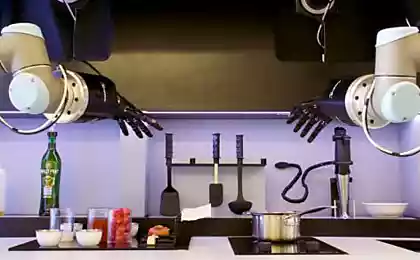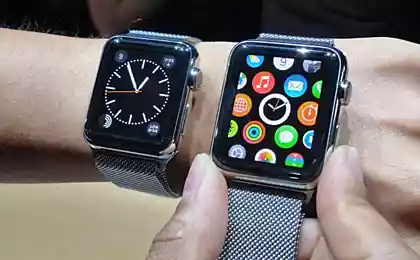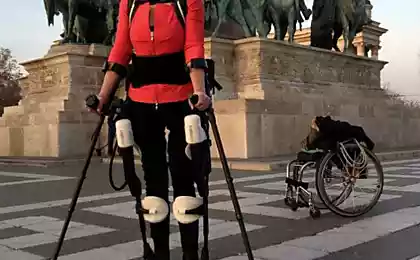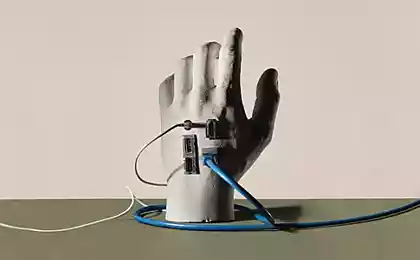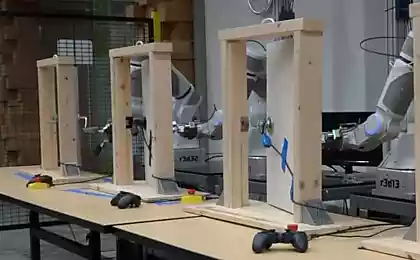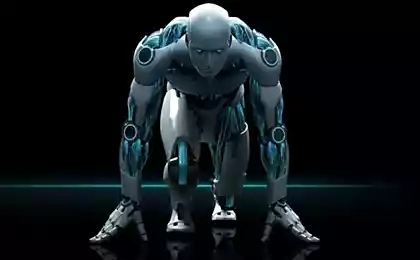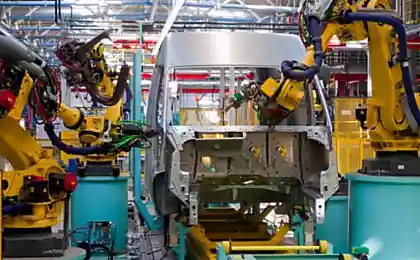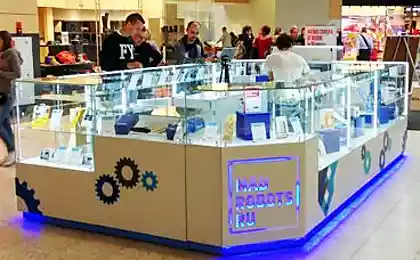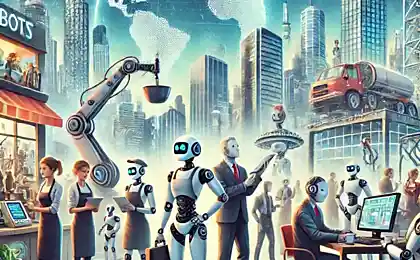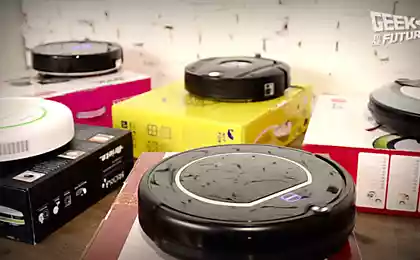In the past, my post was mentioned on telemedicine robot surgeon Da Vinci, which in 2010 was established around 1000 in the world. But this is not the only achievement of robotics used in medicine.
In what areas and to what use the robot? In surgery, as caregivers for children and the elderly, telemedicine and even drug delivery. Details - request by habrakat.
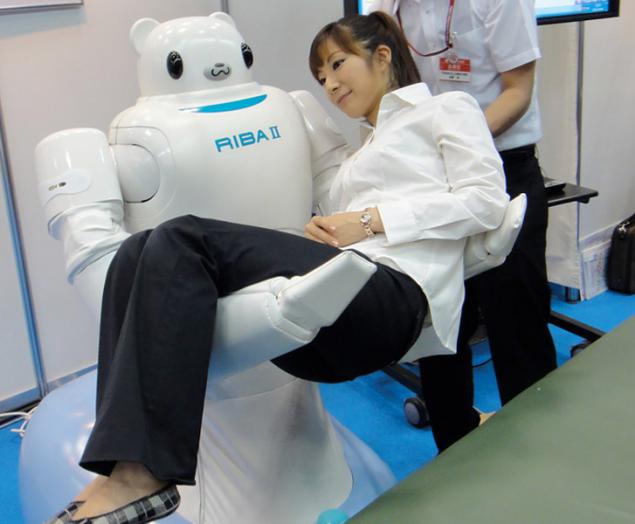
RIBA h4> The robot Riba originally from Japan. He was introduced in 2009. Its main purpose - is using its long and strong hands to rock the sick and the elderly. This is a great helper in the clinic, as it can carry patients from place to place or move from wheelchair to bed.
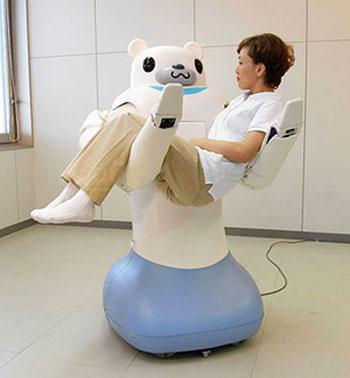
In 2009 presented RIBA II. This version of the robot can lift patients directly from the floor, while the first robot could take them only wheelchair or bed. Also, load capacity has increased to 176 pounds, or 80 kg, which is 41 pounds, or 18, 5 kg more than in the first version.
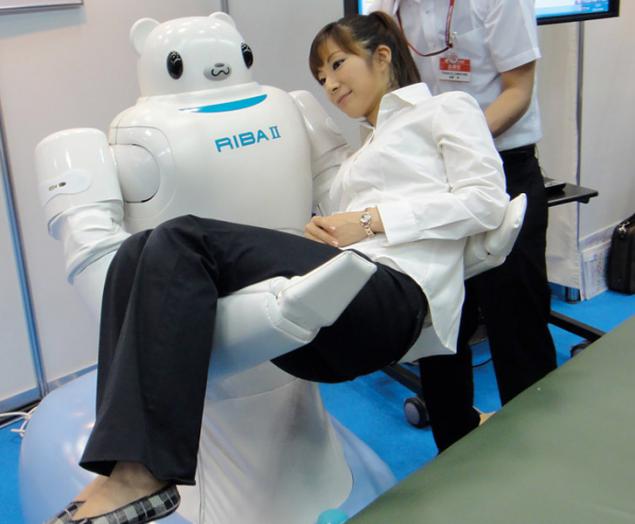
Why do we need a Japanese robot? It's all about longevity. In Japan, by 2015 the number of elderly people who will need care, is projected to reach five and a half million people. So imagine how many nurses and medics have to raise daily in patients with futon on the carriage, with strollers on the bed, back and so on. Robots are suitable for this purpose better, and let the nurses do their job - just take care of the elderly.
But this robot is listed in the Guinness Book of Records as "the world's most therapeutic robot." It is equipped with multiple sensors - touch, light, sound, temperature and position. It is necessary for good communication with the patient, helps to calm the patient.

Keepon is needed for the same, but it is, in my opinion, less cute. He dances and responds to touch.
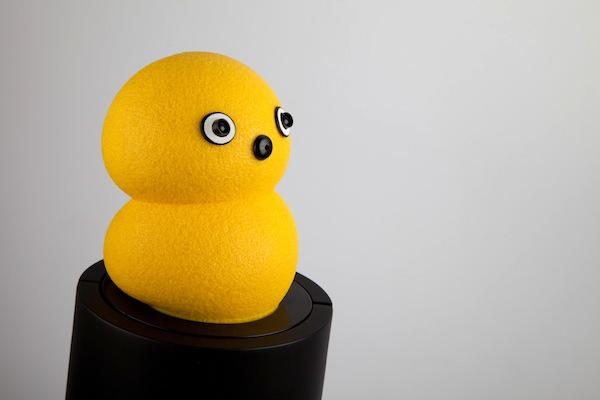
Robot on hand h4> Another way to get rid of the routine work of nurses, taking their time more useful things - it's a robot from Murata Machinery Ltd, intended for the issue of drugs.
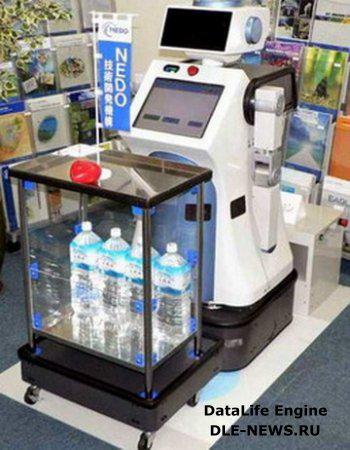
Robot from Panasonic also designed to deliver medication from the pharmacy patients. The first version of this robot could already store information on 400 patients and dispense drugs in accordance with the recipe at the request of the patient or nurse.

Telepresence h4> Returning to the issue of telemedicine (which Habré, judging by the comments, according to Malysheva TV shows), it should be said about telepresence robots. It is a complex, capable to move independently, equipped with cameras, displays, speakers and microphones, and in addition to them - means for the diagnosis and analysis. Such means can be both able to connect to devices such as ultrasound, and built-in appliances - for example, for blood analyte.
In the Russian realities of the use of such robots is almost impossible, because we have all the problems with ramps - that at the entrance to the clinic is inside them. So that the robot can move only within a single storey maximum and minimum - within the room, unable to overcome the huge nut.
PR-7

Vgo - control via 4G.
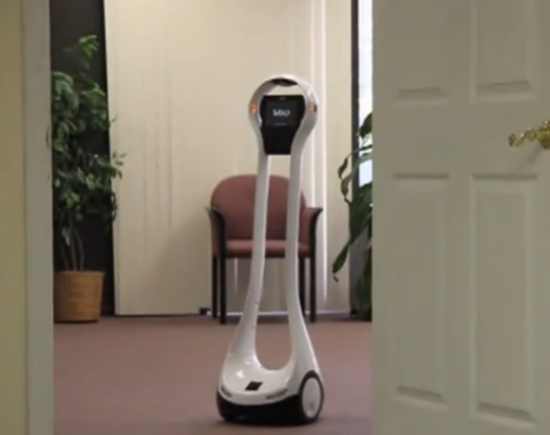
Surgery h4> PUMA 560 was the first robot used in neurosurgery. This robot assistant, submitted in 1985.
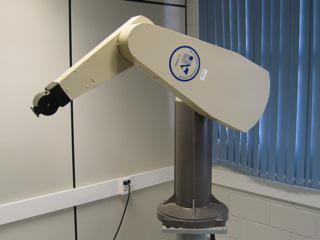
In orthopedics with prosthetic joints in 1992 began using RoboDoc.
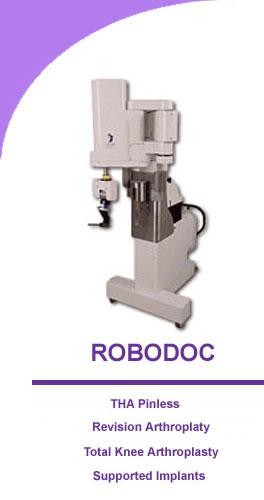
Later, there were assistants Aesop and Zeus, but still the protagonist was a surgeon during surgery. In the late 1990s, this changed with the advent of Da Vinci - robot for remote operations.
The surgeon sees a portion of the remote control in 3D with multiple zoom, and works with a joystick. At this time, four-armed robot does make transactions. Initially, the image has been voluminous, of course, but then the problem solved.

Minute Transformers: ARES by Italian scientists for conducting operations without damaging the skin. Because the patient lays on his part, and then as it goes through the intestines. Inside the robot collects himself, after which the surgeon performs the operation.
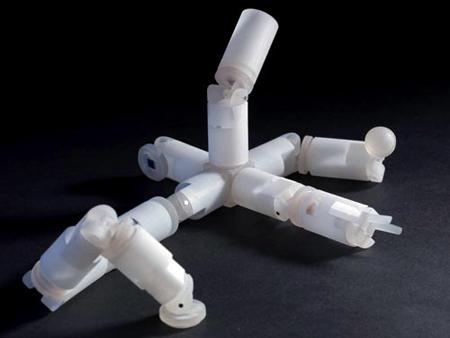
Training simulators patients h4> Send patients live newcomers - not very humane. It is much better to practice first on a robot that handles the needs of nature in which the heart beats and that is more or less similar to humans.
The most functional robot of this type is considered HPS (Human Patient Simulator). It keeps 30 different profiles of patients differ in physiology and individual responses to medicine. This profile can be a healthy child pregnant woman and an elderly alcoholic. Palpable carotid, brachial, femoral, popliteal artery radial pulse varies depending on the pressure, the robot breathes out carbon dioxide, which is displayed on the monitors, and his pupils react to light.

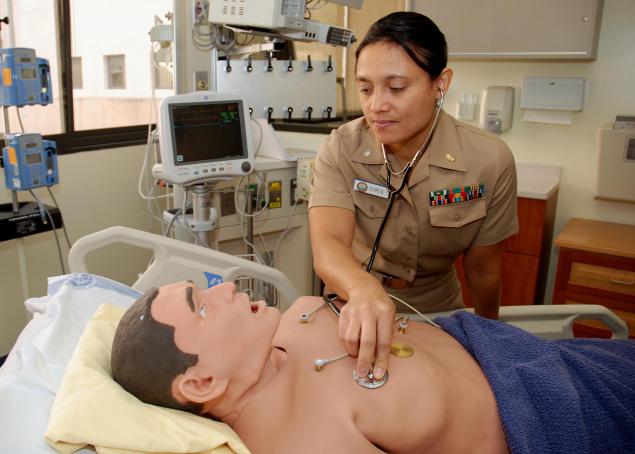
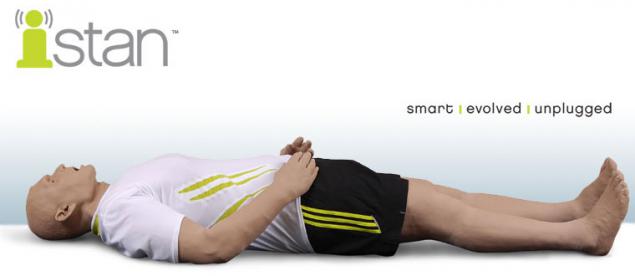
With dentists - the same story. Enough to shred poor people with diseased teeth! First Train on cats. In the photo - Hanako 2, a native of Japan, is immediately obvious.
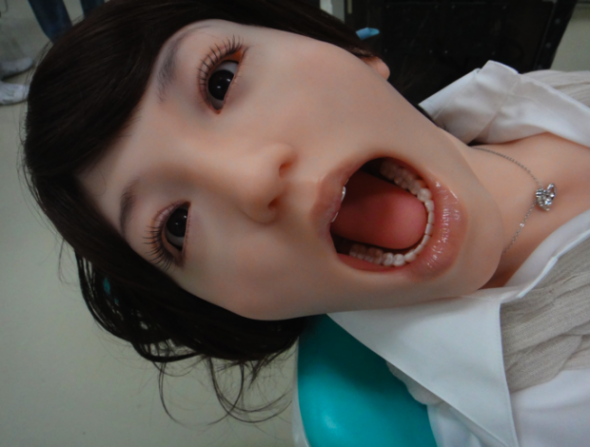
Please write in the comments what other robots must be in this publication.
Source: habrahabr.ru/post/239473/



















